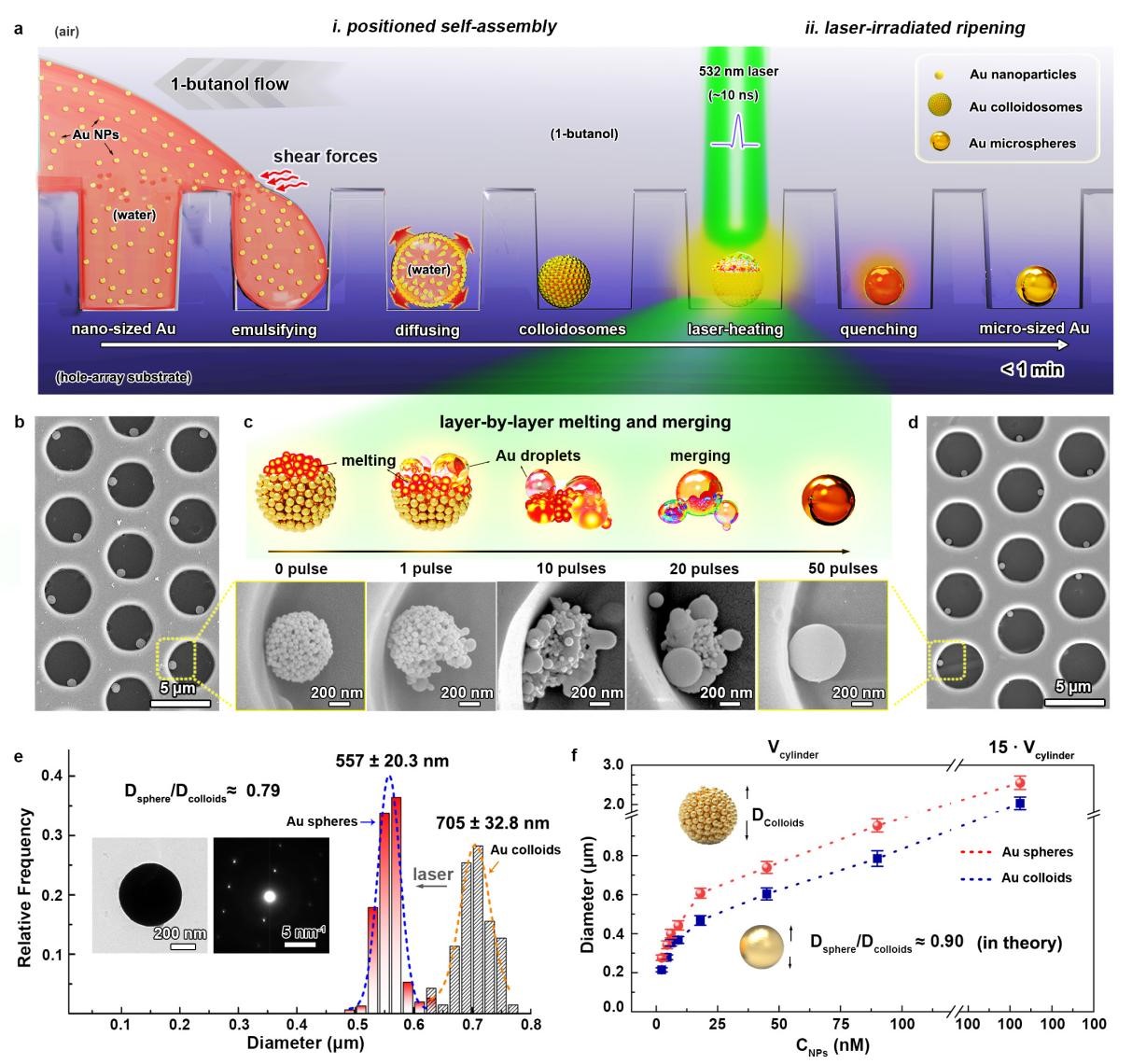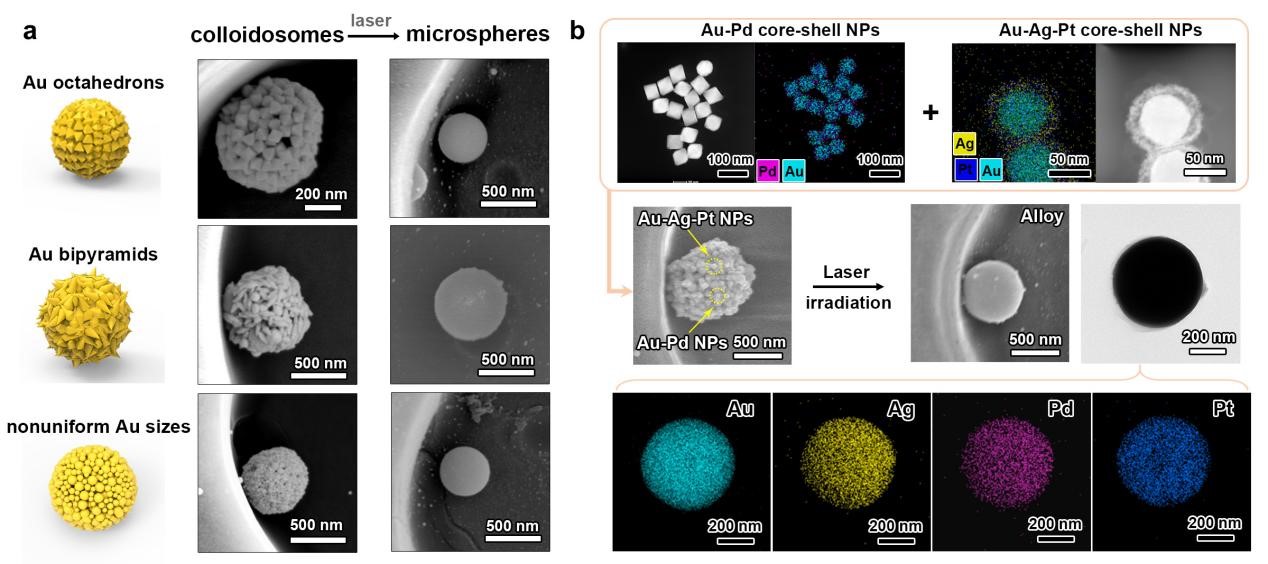As electronic devices get smaller, it's becoming harder to achieve high-quality connections that are both reliable and safe from short circuits. Researchers developed the array-ACF (anisotropic conductive adhesives film) using metal-coated polymer microsphere arrays to make these connections years ago, but the bond between the metal and polymer could crack under pressure, affecting its performance.
Now, a collaborated team led by researchers from Hefei Institutes of Physical Science of the Chinese Academy of Sciences, enables efficient construction of gold microsphere array-based anisotropic conductive adhesives film (ACF) for advanced packaging.
The research findings were published in Nature Communications.
In their study, the researchers developed a new approach to fabricate pure gold microsphere arrays within one minute through a positioned self-assembly and laser-irradiated ripening strategy. This technique relies on a rapid layer-by-layer laser-induced melting and fusion process, effectively avoiding the anisotropic growth principle.
The fundamental advantage of this strategy lies on the formed size of gold microsphere determined by the initial templating microholes and precisely positioned within them. This not only facilitates precise control but also ensures compatibility with lithography techniques in the industry.
The technique is also flexible and can be used to create different kinds of microspheres, including alloy microspheres made from gold and other metals. When these microspheres are treated with laser, they fuse together smoothly, creating stable and durable materials.
Compared to commercial gold-plated microspheres, the pure gold microspheres are much more flexible and resistant to electrical problems under pressure. These gold microsphere arrays could help improve the bonding of micro-displays, like those used in μLED chips, which are key to creating high-resolution displays.

Rapid approach to pure gold microsphere array fabrication. (Image by CAO An)

Laser fluence factor and versatility. (Image by CAO An)






